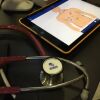Communications is the cornerstone upon which our EMS services to the public are built. If our customers cannot call us, if we cannot locate them, there is little we can do to help them.
Today these technologies are more robust than ever before, with new options arriving every year. Where we once had few options, fraught with severe limitations, we now have wealth of choices.
Our communications technologies are grouped in three key areas: dispatch, mobile communications, and medical communications.
Dispatch systems
CAD or Computer Aided Dispatch systems, have become the industry standard. Once pioneered in the big cities, they have now become scalable for any sized EMS agency. Most systems today now combine communications, computer hardware and software and video displays.
Examples of CAD systems include: Optima Solutions including Optima Live, Optima Predict, and Optima Net. Also be sure to check out Avtec products including Scout, DSPatch, and DSPatchNET. The Open ISES Project provides open source software and support materials. The CADVoice(R) system from Locution, automatically creates and sends clear announcements about a fire or medical emergency to designated fire and EMS units in the field.
For purchasing advice, check out this article on How to Buy CAD Equipment. EMS1 is also proud to partner with Cisco to provide a free, downloadable PDF eSupplement with valuable information for emergency communications. Visit the EMS1 eSupplement Section and simply log in using your existing EMS1 account or quickly register for full access.
Mobile solutions
Mobile Communications started getting decent with the advent of the cell phone.
Today cell is still great, but we do have more secure options. One example is the Incident Commanders’ Radio Interface, a multi-purpose ‘bridge’ solving three issues for first responders:
1) Communications Interoperability- by bridging mobile, portable, military and civilian radios.
2) Functioning as a repeater to connect and extend radio frequency coverage in urban or wildland environments.
3) Enhances in-building coverage and extends underground communications. Visit the Communications-Applied Technology Web site for more information.
EF Johnson Technologies provides two-way radios and trunked/conventional communication systems for law enforcement, firefighters, EMS, and the military. Their new 5100 ES Series radios meet the needs of first responders and are specifically designed for public safety. The 5100 ES Series features crisp and powerful digital audio, Project 25 trunked and conventional operation, SMARTNET/SmartZone interoperability, and a sleek ergonomic design. Check out the ES Series Portable Radios on the EF Johnson Technologies Web site. They also just announced the Atlas P25 Systems Solution.
ATLAS provides a complete Land Mobile Radio (LMR) system solution in all public safety VHF, UHF and 700/800 frequency bands. The new offering introduces simulcast capability for both conventional and trunking systems, providing significantly more architecture options for its customers. ATLAS P25 is the first system solution in the industry with the ability to combine conventional and trunking into one system, creating a “hybrid” that is completely tailored to a customer’s unique environment.
Basic cellular and push-to-talk services are still a great option for those in rural areas or on a tight budget. Verizon Wireless offers America’s largest push-to-talk coverage area. When you need to get information, make an emergency announcement, or mobilize employees you can connect instantly with individuals or groups with the push of a button. Learn more about push-to-talk here.
My first portable radio was so heavy it came with a leather belt and shoulder strap. Today’s modern radio handsets have gotten much smaller and more powerful. A few good examples include the Kenwood ProTalk, and the RCA BR950 for a rugged, both UHF & VHF full 5 watt handheld, and the F50/F60, or Rugged Radio. Motorola has always been a popular choice for mobile radios. Some of their latest handsets include the popular MOTOTRBO line, and P25 portable radios.
Medical communications
Medical Communications are getting better too. While seemingly dormant for over a decade, new technologies are finally arriving that will improve patient care. Soon we will see systems capable of much more than voice and ECG data. Once telemetry meant sending an ECG. Tomorrow it will mean sending the entire clinical picture, with streaming live video. For more on the subject, check out this article on trends in medical communications.
Once we had little more than a choice between limited range UHF or low power VHF radios. Until recently the most reliable communications device of scene was usually the patients’ home phone. Today we have broadband cellular, satellite, and even more exciting options just on the horizon.
Better communications has improved the EMS industry and our ability to serve our public. We still have room for improvement. Imagine the power of today’s smart phones applied to the practice of EMS. How about an EMS radio-wristwatch that tracks and bio-monitors the wearer?
We are closer than you might think to some really exciting improvements in EMS communications.













